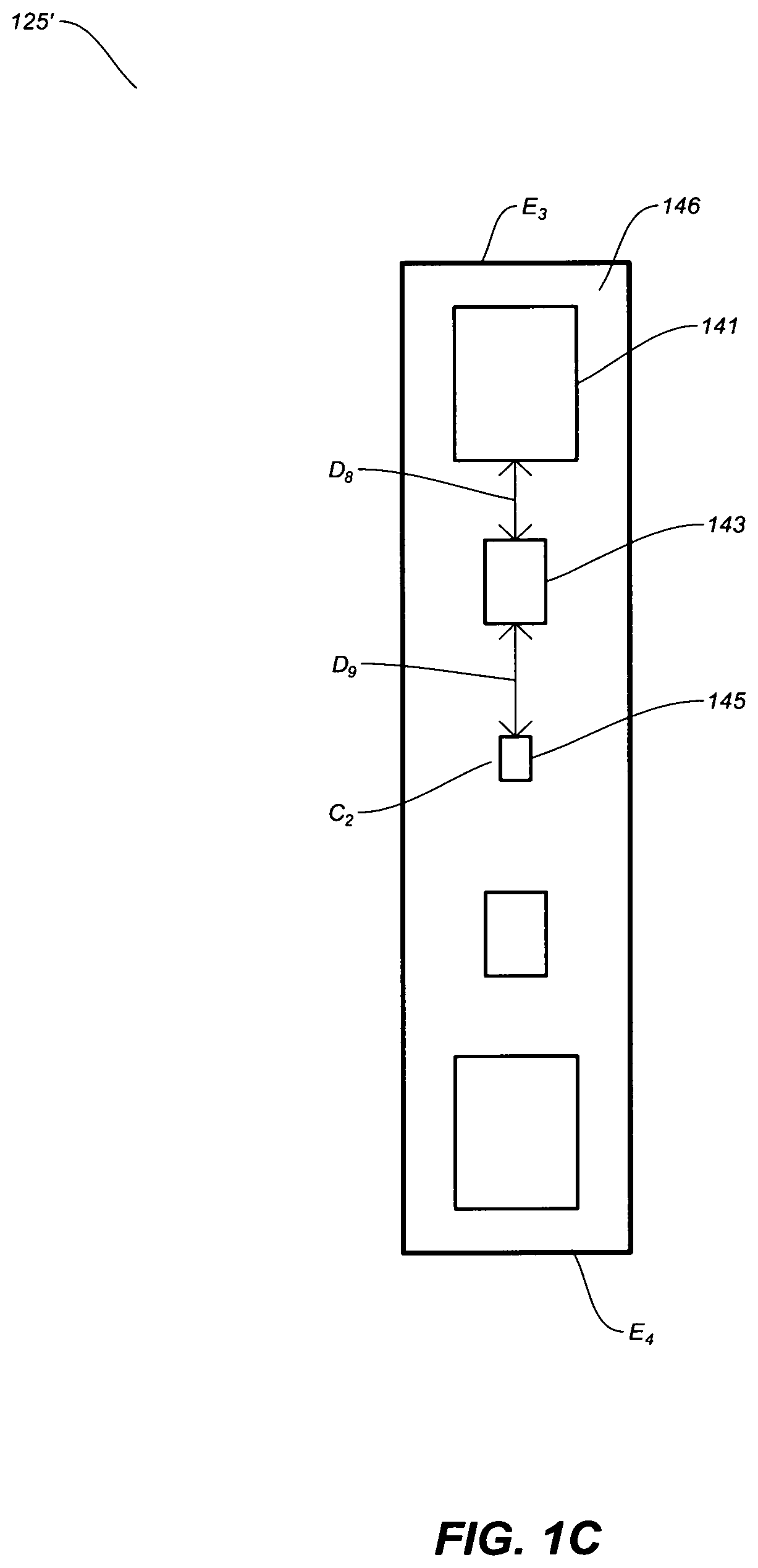LED grow-light system
a technology of grow lights and led lights, which is applied in the direction of lighting and heating apparatus, semiconductor devices for light sources, lighting support devices, etc., can solve the problems of not being well suited to provide vertical light canopies for grow beds, light systems are not satisfactory, etc., and achieve the effect of reducing the die-off of light density and/or light intensity
- Summary
- Abstract
- Description
- Claims
- Application Information
AI Technical Summary
Benefits of technology
Problems solved by technology
Method used
Image
Examples
Embodiment Construction
[0043]Referring to FIG. 1A, a LED grow-light system can include a LED grow-light canopy 100 with any number of LED light bars 101, 103 and 105. The LED light bars 101, 103 and 105 are preferably linear elongated LED light bars that are arranged to be parallel with respect to each other in a parallel or elongated direction, as indicated by the arrow 106.
[0044]Each of the LED light bars 101, 103 and 105 include LEDs or arrays of LEDs 111 / 111′ / 111″, 113 / 113′ / 113″, and 115 / 115′ / 115″, respectively. The separation between adjacent and sequential LEDs or arrays of LEDs 111 / 111′ / 111″, 113 / 113′ / 113″, and 115 / 115′ / 115″ is uniform, as indicated by the arrow D1 and D2. Also, the parallel separations of distances between adjacent LED light bars is also usually uniform, as indicated by the arrow S1 and S2. The light canopy 100 described and illustrated in FIG. 1A will exhibit die off in light density, and / or intensity, around the outside edges 102 / 102′ and 104 / 104′ of the LED grow-light canopy 10...
PUM
| Property | Measurement | Unit |
|---|---|---|
| light spectrum | aaaaa | aaaaa |
| spectrum | aaaaa | aaaaa |
| luminous efficacy | aaaaa | aaaaa |
Abstract
Description
Claims
Application Information
 Login to View More
Login to View More - R&D
- Intellectual Property
- Life Sciences
- Materials
- Tech Scout
- Unparalleled Data Quality
- Higher Quality Content
- 60% Fewer Hallucinations
Browse by: Latest US Patents, China's latest patents, Technical Efficacy Thesaurus, Application Domain, Technology Topic, Popular Technical Reports.
© 2025 PatSnap. All rights reserved.Legal|Privacy policy|Modern Slavery Act Transparency Statement|Sitemap|About US| Contact US: help@patsnap.com



